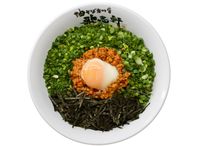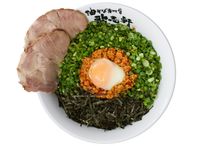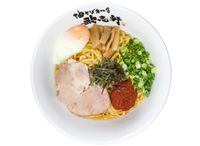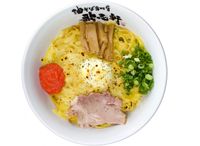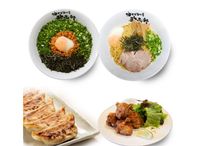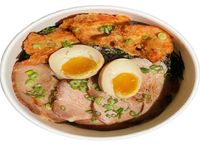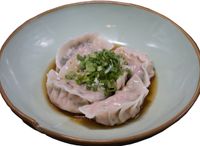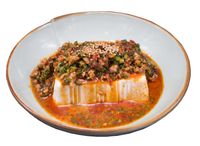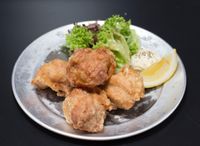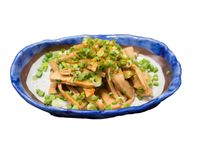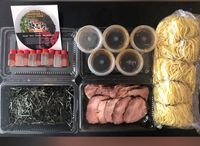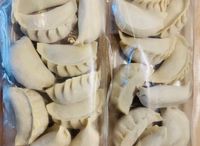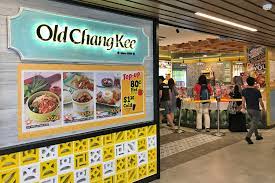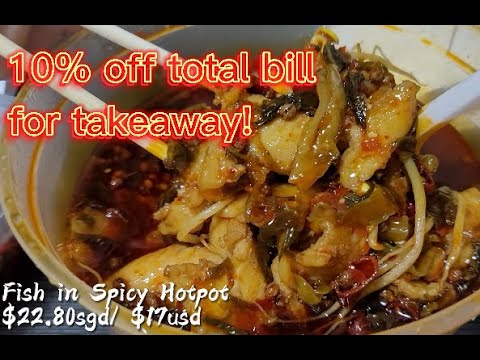Kajiken Ramen Menu Prices Singapore 2024
Hello Kajiken Ramen lovers, are you looking for the latest Kajiken Ramen Menu? You have arrived at the right place then. We have uploaded their complete menu with pictures & updated prices. Below you will find the latest Lists of Kajiken Ramen Menu 2024 Singapore with prices.

Kajiken Ramen Menu Singapore With Prices List
Popular
Mains
Look no further than Kajiken Ramen Menu Singapore! Indulge in authentic Taiwanese Mazesoba Nagoya Style starting from just S$16.52 or savor the tantalizing Original Mazesoba with Spicy Chili Sauce at S$17.60. Their menu boasts an array of delectable options like Grilled Cheese with Cod Roe Mazesoba and Hokkaido Mazesoba for only S$20.30. Whether you’re a fan of Char Siew or Karaage, Kajiken Ramen has got you covered with their delightful Mazesoba combinations, starting from S$19.76.
Value Set
Value Set Add On Toppings
Their delectable bowls of ramen are elevated with a variety of mouthwatering toppings to choose from. I highly recommend trying their Half Boiled Egg and Flavoured Egg for an extra burst of flavor. And if you’re a spice enthusiast, don’t miss out on their Spicy Chili Sauce or Curry Powder options. The Kimchi, Cod Roe, and Coriander toppings also add a delightful twist to the experience. Don’t wait any longer to savor these delightful offerings starting from just S$1.08!
Rice Bowls
Rice Bowls
Side Dishes
From the first bite of their mouthwatering Edamame to the flavorful Yuzu-Pon Boiled Gyoza, every dish leaves a lasting impression. Don’t miss the delectable Spicy Tofu and Pan-Fried Gyoza, both priced at just S$ 8.64. The Karaage and Bamboo Shoots with Spring Onion, each for S$ 8.64 and S$ 7.56 respectively, are also not to be missed.
Mazesoba Home Kit
Their delectable offerings include the mouthwatering Original Home Kit and the tantalizing Taiwan Home Kit, both starting from just S$10.58! For a more satisfying meal with your loved ones, try the Taiwan Family Kit or the Original Family Kit at an affordable S$42.98. And don’t forget to savor the Frozen Gyoza, a delightful treat at S$21.60.
Beverages
Drinks
Kajiken Ramen Alternative Restaurants
What is the meaning of Kajiken?
What’s the deal with Kajiken? Well, let me tell you! Kajiken is a fantastic chain of mazesoba shops, originating from Nagoya, and it boasts more than 40 stores worldwide. But hold on, what’s Maze Soba? It’s a type of ramen without the traditional soup, and in Japanese, “maze” means “to mix”. So, put simply, maze soba translates to “mix the noodles” – a dish where you mix all the delicious ingredients and flavors together for a delightful taste experience. If you haven’t tried it yet, you’re definitely missing out!
What is the kanji for ramen?
“The kanji representation of ramen is 拉麺. When writing about ramen in Japanese, it is common to use katakana instead of kanji.”
Is ramen Korean or Japanese?
Is ramen Korean or Japanese? Let’s clear up this delicious confusion! Ramen, my fellow food enthusiasts, is undeniably a Japanese noodle soup that boasts a delightful umami flavor. It features scrumptious wheat noodles accompanied by a medley of savory toppings. Distinct from its Korean counterpart, ramyeon, which often comes in instant form, traditional ramen is meticulously crafted with fresh ingredients and a whole lot of culinary love. Some varieties even require long hours of simmering, like the famed tonkatsu broth which demands nearly a day of preparation to achieve its mouthwatering richness.
Why is ramen written in katakana?
“Why is ramen written in katakana, you might wonder? Well, the reason behind it is quite fascinating! In Japanese, ramen is considered a foreign term, originating from China. To distinguish it as an imported word, the Japanese language typically employs the katakana script. So, the next time you spot the characters ラーメン (ramen) on a sign or menu, you’ll know it’s their way of acknowledging the dish’s Chinese roots!”
What ramen is Naruto?
One such topping is Naruto, which happens to be a popular addition to various Japanese noodle dishes like Tokyo-style ramen. Interestingly, you can also find it being used as an ingredient in dishes like oden and nimono in certain regions of Japan. So, if you’re a ramen enthusiast or simply curious about different noodle toppings, Naruto is definitely worth trying out!

Author: Christopher Tan
Hi there! I’m Christopher Tan, an award-winning writer, cooking instructor, and photographer. My passion lies in combining my love for words, images, and of course, food to create meaningful experiences. I have been honored to have my work published in numerous esteemed publications, including the Sunday Times and Straits Times in Singapore, Saveur magazine in America, and The Peak magazine.
I have expressed my love for food through the written word by authoring and co-authoring multiple cookbooks, including Chinese Heritage Cooking, Ask The Foodie and NerdBaker. I am thrilled to inspire others to create their own meaningful experiences through food, through my writing and teachings. I write restaurant menus and review on eatzeely.com
